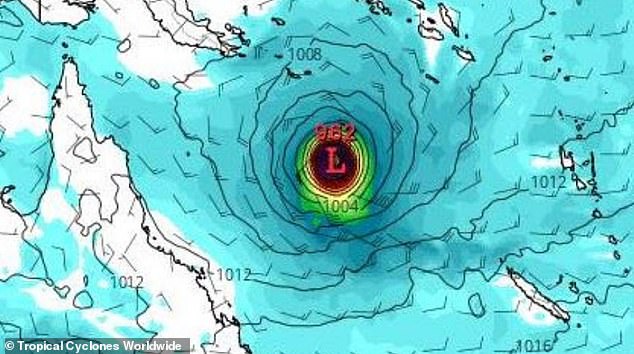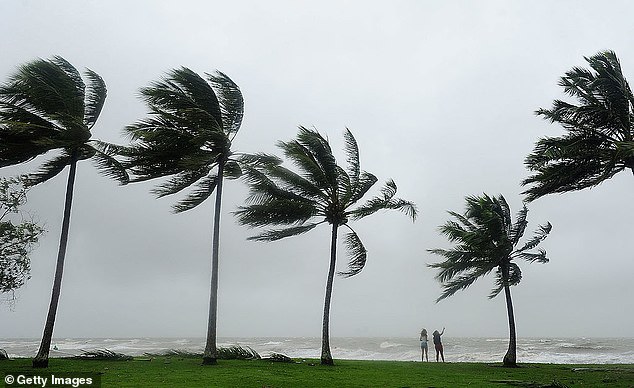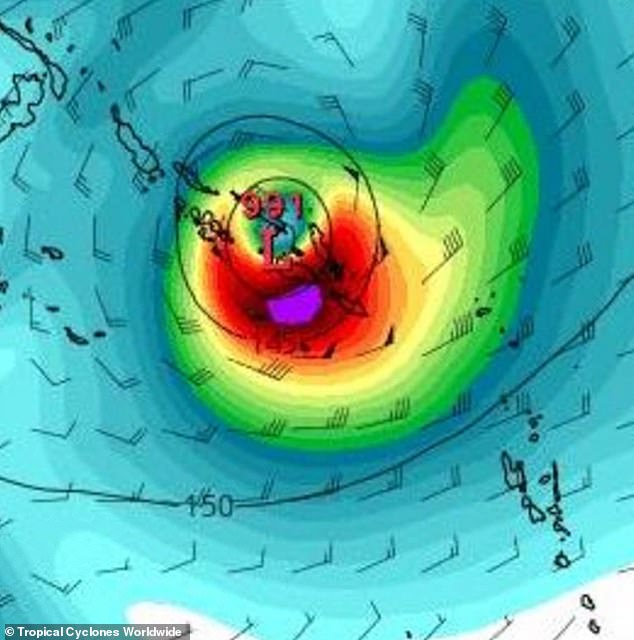Queensland on tropical cyclone alert after huge storm formed in the Coral Sea
- A massive storm is forming off the coast of Queensland
- It could turn into a freak tropical cyclone
Cyclone enthusiasts are keeping a close eye on the massive storm forming off the coast of Queensland. Experts say there is a chance it could develop into a tropical cyclone.
The storm off the coast of Far North Queensland could potentially become a freak tropical cyclone, according to the Bureau of Meteorology, making it the first time this has been recorded in the Coral Sea so early in the year.
Bureau of Meteorology senior meteorologist Harry Clark said on Tuesday there was a “certainly unusual” chance of a tropical low forming in the Coral Sea over the next week.
The typical start of the cyclone season is in November.

Experts have warned a massive storm off the coast of North Queensland could develop into a tropical cyclone
‘The chance that this system will form a tropical cyclone over the weekend is estimated as a small chance – about a 5-15 percent chance – but by Tuesday the chance increases to a moderate chance as it moves slightly more to the southwest ‘, Clark said. told the Courier mail.
While there is no immediate threat to the Queensland coast, Mr Clark said the Bureau will continue to monitor the system in the coming days.
‘It’s certainly unusual to find one in the Coral Sea; it would be the first time we’ve actually seen one in October since we started collecting reliable data in the 1970s,” he said.
‘There’s a confluence of tropical climate factors that are causing this… there’s the Equatorial Rossby Wave, which is basically an expanded area of rising air aloft that can help cause this.
‘There are also weak Madden Julian Oscillation pulses in the area which have just led to a somewhat favorable environment at an atypical time of year for development.’

Cyclone season typically starts in November in Australia (stock image)

Senior meteorologist Harry Clark from the Bureau of Meteorology said there was a “certainly unusual” chance of a tropical low in the Coral Sea over the next seven days.
Mr Clark said an El Nino weather pattern would likely mean fewer cyclones, with eastern Australia having a 76 per cent chance of fewer tropical cyclones than average.
“That’s the general theme of El Nino, which is ironic, I appreciate… but we really encourage everyone to use this as a good opportunity to familiarize themselves with the seven-day tropical cyclone outlook… and obviously do their preparations ahead of the cyclone season. ‘
Last month the Bureau of Meteorology confirmed the onset of El Nino, raising the likelihood of a blisteringly hot and dry summer.
It follows a period of breaking global weather records and a series of natural disasters that led to deadly heatwaves and devastating floods in the Northern Hemisphere.
El Nino is the opposite of La Niña – which causes the flooding seen in Australia in recent years – and causes hot, dry weather that can increase the risk of bushfires.
